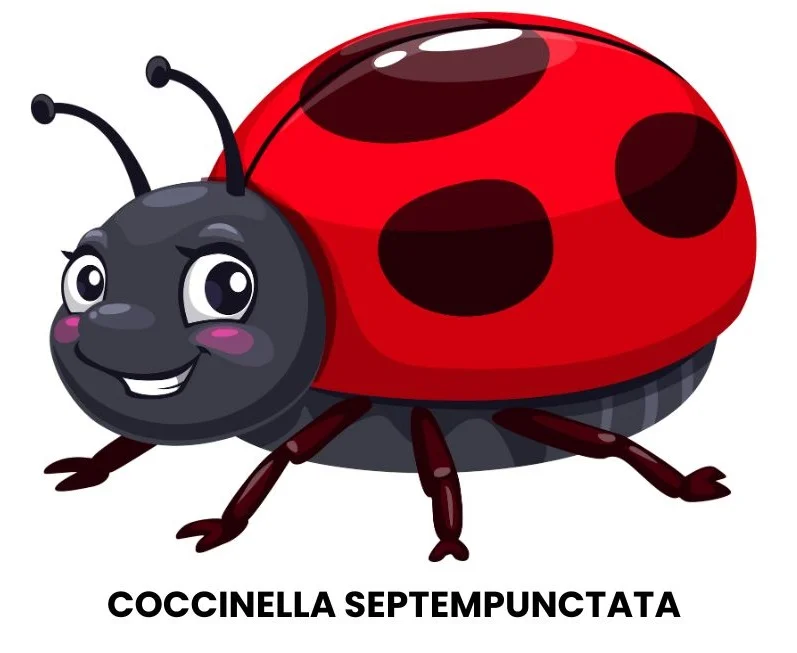Coccinella Septempunctata, commonly known as the Lady Bug, is a homeopathic remedy derived from the seven-spotted ladybird.
This remedy is notably useful in treating various neuralgias, particularly those affecting the teeth, gums, and mouth.

Table of Contents
ToggleSOURCE INFORMATION
Scientific Classification
- Kingdom: Animalia
- Phylum: Arthropoda
- Class: Insecta
- Order: Coleoptera
- Family: Coccinellidae
- Genus: Coccinella
- Species: C. septempunctata
Origin and Historical Facts
- Ladybugs are widely recognized across the globe and hold significant cultural importance in various regions.
- In many cultures, they are considered symbols of good luck and protection, particularly for crops.
- The seven-spotted ladybug is commonly found in temperate regions and is known for its distinctive red shell with black spots.
- In traditional folklore, ladybugs are associated with positive omens, often linked to fertility and prosperity.
DRUG PATHOGENESIS
- Coccinella Septempunctata acts primarily on the nervous system, producing symptoms related to neuralgic pain, particularly in the dental and facial regions.
- The remedy is characterized by heightened sensitivity and discomfort when exposed to bright light or stimuli. Its pathogenesis includes:
- Neuralgias: Producing sharp, severe pain in the head and face, particularly in the context of dental issues.
- Sensitivity to Light: Symptoms worsen with exposure to bright objects, which can trigger intense pain or discomfort.
- Salivation: It can provoke an increased production of saliva, which may contribute to a sensation of discomfort in the throat and mouth.
PHYSICAL CONSTITUTION
- Individuals who may benefit from this remedy might display heightened sensitivity, particularly to light and touch.
- They may also present with complaints of cold extremities and localized pain in the head and back.
DIATHESIS
- Those needing Coccinella Septempunctata often have a diathesis of nervous irritability.
- They may exhibit traits of being sensitive, easily overwhelmed, or prone to anxiety, which can manifest physically as pain and discomfort.
TEMPERAMENTS
- Patients may exhibit an irritable temperament, experiencing mood swings or heightened emotional responses.
- They may feel anxious or distressed, particularly when experiencing symptoms.
KEY CHARACTERISTICS
- Neuralgic pain: Primarily affecting the head and facial regions.
- Sensitivity to light: Pain exacerbated by bright objects.
- Increased salivation: Accompanied by a sensation of discomfort in the throat.
DETAILED ORGAN SYMPTOMS
HEAD
- Pain: Pain is localized in the forehead above the right eye, which is sensitive to touch. It may radiate from the superior molars to the forehead.
- Aching: Aching can occur in the temples and occiput, often described as a throbbing sensation.
- Throbbing Toothache: Characterized by a cold sensation in the teeth and mouth.
- Frontal Neuralgia: Periodic attacks that may prevent the patient from opening their eyes during episodes.
- Facial Symptoms: Rush of blood to the face.
STOMACH
- Hiccough: May be accompanied by a burning sensation in the stomach.
BACK
- Pain in Kidneys and Loins: Patients may complain of pain localized in the kidney area and loins, suggesting a systemic issue.
- Cold Extremities: Exhibiting icy coldness in the hands and feet, which may signify circulatory problems.
MODALITIES
Worse
- Exposure to bright objects.
- Sensitivity to touch.
Better
- Sleep, which may relieve symptoms temporarily.
RELATIONSHIP WITH OTHER DRUGS
Comparative Remedies
- Cantharis: For burning and irritation, especially related to urinary symptoms.
- Magnesia Carbonica: For gastrointestinal disturbances.
DOSE
- Potency: Administered in the third potency for effective results, allowing the remedy to resonate with the patient’s symptoms.
Frequently Asked Questions (FAQs)
What conditions can Coccinella Septempunctata help with?
- It is particularly useful for neuralgias involving the teeth, gums, and mouth, as well as headaches aggravated by bright light.
How does it work?
- This remedy works by targeting nerve pain and sensitivity, reducing discomfort and improving overall well-being.
Is it safe to use?
- As a homeopathic remedy, it is generally considered safe when used as directed.
- However, consulting with a qualified homeopath is advisable for individualized treatment.
How should it be administered?
- Typically taken in a third potency, as prescribed by a homeopathic practitioner.
Can it be used for children?
- Yes, it can be used for children, but dosage and administration should be guided by a homeopathic professional.
Glossary of Difficult Words
- Neuralgia: Intense pain along the course of a nerve.
- Uvula: The small fleshy extension at the back of the throat.
- Hydrophobia: A fear of water, often associated with rabies.
- Potency: The strength or concentration of a homeopathic remedy.
- Salivation: The production of saliva, often increased due to irritation.
- Throbbing: A rhythmic pulsing sensation often associated with pain.
- Icy cold extremities: A condition where the hands and feet feel unusually cold.
This comprehensive overview of Coccinella Septempunctata provides a detailed insight into its usage, symptoms, and relationships in homeopathy, assisting practitioners and patients alike in understanding its relevance in treatment protocols.
